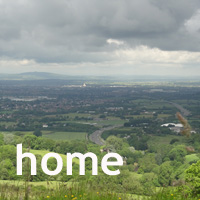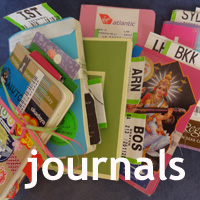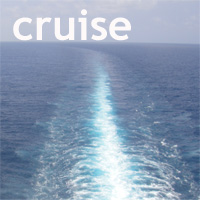I think it’s Friday?
 Friday, September 16, 2016 at 3:55PM
Friday, September 16, 2016 at 3:55PM
I know we are in Latvia, though.
In Riga, to be precise.
We didn’t have to set the alarm this morning, for we were not due into Riga until 10. So, by the time I opened the curtains and took a breath of fresh air, our pilot was sailing alongside.
We enjoyed our breakfast sailing up the river, sitting outside with our friends, noting the different landscape on each side of the river: a heavy industrial scene on one side; green countryside and forest on the other.
It was all looking very interesting and we looked forward to getting ashore to see the city.
We had an excellent parking spot!
We had chosen a city tour, beginning with a bus-based overview but followed by a couple of hours walking. As we drove from the terminal, we were surprised at the grand buildings. Most of these in the “quiet part” of the city were built towards the end of the nineteenth century or early 20th and now featured as hotels, offices and some apartments. Very nice indeed,
Riga has still got a few signs of the old Soviet days here and there, but these are few and far between.
We left our coach by the bridge and wandered into the Town Hall square, amidst a lovely collection of what looked like very old buildings, However, though they looked old, most were renovations or total rebuilds of what stood there before the war. What was especially annoying here was the exhibition of photographs of Slovenia. Not that we have anything against the place, but we hadn’t come to see those, we’d come to see what lay behind them. What with the very bright sunshine and the photographs, it proved difficult – no impossible – to get a decent picture of the Black Head House, the red brick facade behind.
Restored in 1990, the gable end was spectacular, but I’m afraid you’ll simply have to take our ward for it.
Opposite the medieval hall, then, was the classical Town Hall.
and in stark contrast, the Soviet-era building behind us, some kind of college we thought.
As we moved on to our next stop, I snagged a quick snapshot of the Black Heads house and cursed those pictures of Solvenia once again!
We walked in and around the city for the next couple of hours, stopping every so often to take note of a landmark and to listen to a story or two. Gita, our guide was great and brought her city to life for us. In front of this church, we learned of the architect sitting on top of the golden rooster up there at the top of the rather vulnerable spire, drinking red wine. As he threw the glass down, he wished for his spire to last as many years as the pieces of shattered glass – except the glass landed in a passing hay cart. When that spire suffered a strike of lighning some years later, the next architect took particular care and threw his champagne glass more carefully, ensuring it shattered into hundreds of pieces!
We saw fragments of old city walls
picturesque corners of the old town
and places that we might return if we had the chance
We were blessed with amazing weather once more, though out of the sun, there was a chill wind.
The Opera house was looking grand and standing here, Gita told us about the rich music and dance tradition of Latvia. We have shared some of it of course, with Andris Nelsons conducting the Birmingham Symphony Orchestra and his wife Kristine Opolais, who sings with the Met Opera from time to time.
The Freedom monument is quite a landmark here and offered another focus for a few stories of the Soviet days, when no-one dare hang around nearby for fear of the consequences. But these days, it provides a place for Latvians to celebrate special days in the calendar, though depending on one’s heritage, they can differ. The varied history of the country has resulted in family divisions, with some members being conscripted to the German forces, whilst others found themselves on the opposing Russian side. Such sentiments linger long.
On we went then, past the Guildhouses, now concert and exhibition halls,
past the black cat cafe, where a potential guild member was blackballed and showed his disdain by placing a cat facing the Guildhall. Originally, the cat was facing away, with its raised tail pointing towards the institution but a recent renovation turned it 180 degrees and into a more polite position!
Riga has many fine Jugendstil or Art Nouveau buildings, and we stopped in front of this one to note some of the features.
You might guess I’d love the two fine bears sitting on the balcony?
But I also liked the apprentice, sitting on one of the pediments, studying his books and hoping to join the guild himself one day.
Standing in the next street, Gita gave us a couple of shopping/souvenir tips before setting us loose for a half hour. Latvian Balsam is apparently the drink to cure all evils, though heaven knows what it tastes like!
She recommended Laima, Latvian chocolate, too. (yes of course we bought some!)
and Latvian amber. But since we satisfied our amber needs in Klaipeda yesterday, you know where we headed, don’t you?! Back to the mitten shop for a bit of Latvian knitting
Had I more time, I might have succumbed to some linen, but now I know I can get it at home (thanks Marion!) we moved right along.
And so we moved on, through more narrow streets, past more landmarks and other beautiful buildings.
We stood in the centre of Riga to admire the cathedral. How did I know I was standing in the centre?
That bright sunshine made taking photographs really tricky!
We admired the front of the former bank on the corner here, complete with bullet damage
and we learned of the Latvian preference for catching every bit of sunshine by sitting outside as much as possible. “Until their beer freezes over”, said Gita.
The Swedish Gate led to another historic area – I had totally lost my bearings by now.
So I took a picture of the name of the street, just so I could work out where we’d been.
This was a typical medieval street, slightly curved, cobbled (each farmer visiting the city was asked to bring two stones from his fields or he’d be refused entry) and draining to the middle.
When we stopped in front of this unassuming building, we wondered what story we’d hear next. No story though: this is the Latvian Parliament.
It’s hardly a grand entrance, is it?
From there, we had just one more street to explore. Three old houses, known as the three brothers,
Here’s the oldest, 15th century, I think we were told.
Right behind us was the last church of our tour, whose unique feature was a test for those who had seen it. Have you ever seen a bell hang outside a church steeple?
Well yes, in Riga of course. The bell is still there but is no longer rung.
Feeling weary and with sore feet from all those cobbles, we were quite glad to catch sight of our bus again.
But as I looked out of the window, we could have walked it home!
 Latvia in
Latvia in  cruise,
cruise,  fun,
fun,  travelling
travelling 







